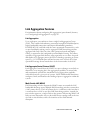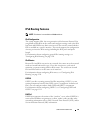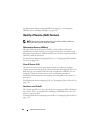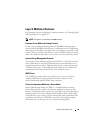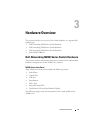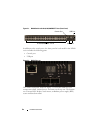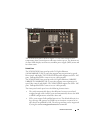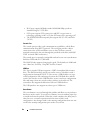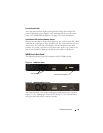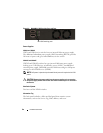
Switch Feature Overview 89
Layer 3 Multicast Features
For information about configuring L3 multicast features, see "Managing IPv4
and IPv6 Multicast" on page 1337.
Distance Vector Multicast Routing Protocol
Distance Vector Multicast Routing Protocol (DVMRP) exchanges probe
packets with all DVMRP-enabled routers, establishing two way neighboring
relationships and building a neighbor table. It exchanges report packets and
creates a unicast topology table, which is used to build the multicast routing
table. This multicast route table is then used to route the multicast packets.
Internet Group Management Protocol
The Internet Group Management Protocol (IGMP) is used by IPv4 systems
(hosts and routers) to report their IP multicast group memberships to any
neighboring multicast routers. Dell Networking series switches perform the
“multicast router part” of the IGMP protocol, which means it collects the
membership information needed by the active multicast router.
IGMP Proxy
The IGMP Proxy feature allows the switch to act as a proxy for hosts by
sending IGMP host messages on behalf of the hosts that the switch
discovered through standard IGMP router interfaces.
Protocol Independent Multicast—Dense Mode
Protocol Independent Multicast (PIM) is a standard multicast routing
protocol that provides scalable inter-domain multicast routing across the
Internet, independent of the mechanisms provided by any particular unicast
routing protocol. The Protocol Independent Multicast-Dense Mode (PIM-
DM) protocol uses an existing Unicast routing table and a Join/Prune/Graft
mechanism to build a tree. PIM-DM creates source-based shortest-path
distribution trees, making use of reverse path forwarding (RPF).
NOTE: This feature is not available on N2000 switches.



